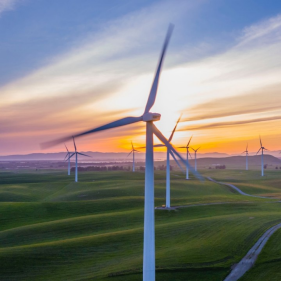The economic losses wrought by climate-related weather are severe and increasing. Between 1980 and 2018, global economic damages from climate-related events increased by over 15 times due to droughts, floods, wildfires, and extreme weather and temperatures, raising the exposure of infrastructure assets to physical climate risks: physical damage to fixed assets as a result of climate-related weather events.
In response, the world economy has begun to shift away from fossil fuel-based energy generation – marking a historic transition toward energy sustainability. Approximately 20% of the world’s total final energy consumption (TFEC) already comes from renewable energy sources, and by some estimates, well over a third of today’s global coal capacity could already be loss making. This shift is rapidly increasing transition risks for infrastructure assets: damage to infrastructure margins or revenues as a result of energy-transition related trends or shocks.
The Global Risks for Infrastructure: The Climate Challenge report outlines the climate risk landscape by discussing the key risks climate change poses to the infrastructure asset class. The report is the second in a three-part analysis of the ‘global risks’ facing infrastructure investors, as enumerated in the 2020 Global Risks Report. In our first instalment of this series, we illustrated the overall risk landscape for infrastructure using the 2020 Global Risks for Infrastructure Map interactive online tool. This second instalment in this series serves as a focused overview of the environmental risks the sector faces.
The report demonstrates how the evolving climate risk landscape has the potential to dramatically transform expectations across the key stakeholder groups comprising the infrastructure sector:
.png)
This report highlights that two key dynamics that will emerge for the infrastructure sector as a result of today’s climate challenge: the emergence of stranded assets, and policy shifts in public-sector support mechanisms for renewables.
The report additionally highlights that as a result of an ever-evolving landscape of climate risks and stakeholder expectations, investors will have to grapple with the rising threat of stranded assets, as well as a shifting landscape of government support for renewable energy. We outline the key drivers of these trends and the multi-layered impacts they will have on investors.
Ultimately, infrastructure investors of all stripes will need to ensure that climate resilience is part and parcel of both their firms’ portfolio design, and of their asset-specific risk mitigation strategies to address the climate challenge ahead. Global Risks for Infrastructure: The Climate Challenge provides investors with an outline of the climate risk landscape, and offers frameworks investors can use to sense-check their internal thinking and develop a strategy that best suits their needs.



.jpg.imgix.fourColumnTile.jpg)
